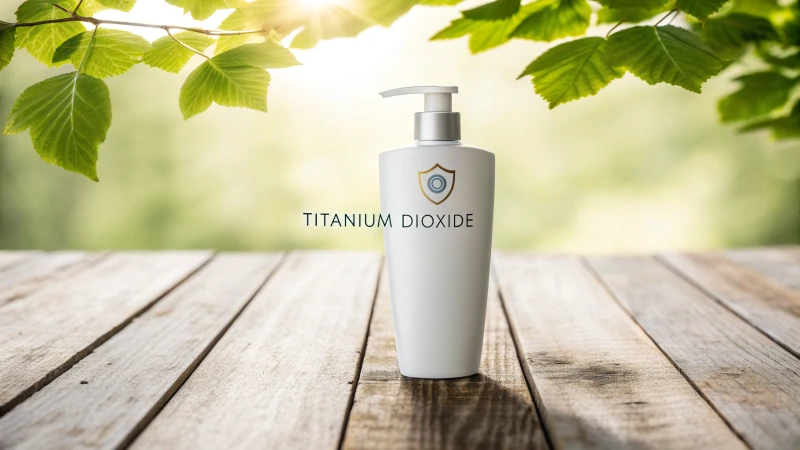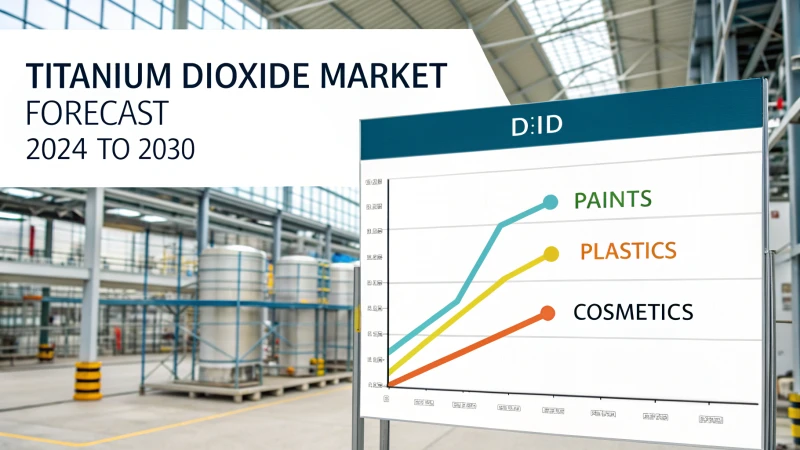
In the vast world of pigments, have you ever wondered what sets one apart from the rest? Let me take you on a journey through the brilliance of R996 Titanium Dioxide!
R996 Titanium Dioxide stands out due to its superior brightness, high opacity, and excellent UV resistance. Treated with zirconia and alumina and produced via the sulfate process, it offers durability and easy dispersibility, ideal for industrial and architectural coatings.
While the basic properties of R996 are impressive, understanding its detailed advantages over other titanium dioxide products reveals its true potential. Read on to explore why R996 is a top choice for enhancing product quality and sustainability in various industries.
[claim claim=”R996 Titanium Dioxide is produced using the chloride process.” istrue=”false” explanation=”R996 is produced using the sulfate process, not the chloride process.”]
How Does the Sulfate Process Enhance R996’s Properties?
The sulfate process is a game-changer for enhancing the performance of R996 titanium dioxide.
The sulfate process refines R996’s particle size, boosting its brightness, opacity, and dispersibility. This meticulous control results in a pigment with enhanced UV resistance and durability, making it ideal for various coatings.

The Science Behind the Sulfate Process
The sulfate process1 is an intricate method used to produce titanium dioxide pigments, including the highly-regarded R996. This process involves treating ilmenite ore with sulfuric acid to extract titanium dioxide. What sets it apart is the precision with which the titanium dioxide particles are refined and controlled.
Particle Size Control
In the sulfate process, achieving the optimal particle size is crucial. The R996 pigment benefits from this rigorous control, resulting in fine particles that enhance its optical properties. The smaller particle size increases surface area, which significantly improves its brightness and opacity in end-use applications.
Enhancements in Brightness and Opacity
The carefully regulated particle size ensures that R996 reflects more light, resulting in superior brightness. This quality is particularly beneficial in coatings, where bright and vivid colors are desired. Moreover, high opacity means fewer layers of coating are needed to achieve complete coverage, offering cost-efficiency without sacrificing quality.
| Property | Benefit |
|---|---|
| Brightness | Enhanced light reflection for vivid colors |
| Opacity | Less product needed for full coverage |
| Dispersibility | Easy integration into various formulations |
Durability and UV Resistance
R996’s production via the sulfate process also involves treatment with zirconia and alumina. These coatings further enhance its durability and resistance to UV radiation, making it a top choice for outdoor applications. The protective layers shield the pigment from environmental degradation, ensuring long-lasting performance.
Applications in Coatings
Thanks to its robust properties, R996 is ideal for a wide range of applications in coatings2, from industrial to architectural uses. Its easy dispersibility means it can be seamlessly integrated into different formulations, providing manufacturers with a versatile solution that enhances product quality and longevity.
[claim claim=”R996 has enhanced UV resistance due to sulfate process.” istrue=”true” explanation=”The sulfate process includes coatings that improve UV resistance.”]
[claim claim=”Sulfate process reduces R996’s opacity and brightness.” istrue=”false” explanation=”It actually increases brightness and opacity by refining particle size.”]
Why is R996 Ideal for Coatings and Plastics Applications?
R996’s unique formulation makes it perfect for both coatings and plastics applications.
R996’s ideal suitability for coatings and plastics lies in its high durability, bright finish, and easy dispersibility. Its specific treatment with zirconia and alumina enhances its UV resistance, making it a preferred choice for both indoor and outdoor applications in the coatings and plastics industries.

Understanding R996’s Core Advantages
The R996 titanium dioxide pigment is renowned for its ability to provide superior brightness and opacity. This is achieved through the precise control of TiO₂ particle size during its manufacturing process. Such attributes are crucial for ensuring that coatings and plastics not only look visually appealing but also offer functional benefits like enhanced protection against UV rays.
The Role of Zirconia and Alumina Treatment
One of the key factors contributing to R996’s effectiveness in coatings and plastics is its surface treatment with zirconia and alumina. These elements boost the pigment’s stability and resistance to environmental degradation. For instance, zirconia enhances UV resistance, which is vital for outdoor applications where longevity and color retention are critical.
The importance of zirconia treatment3 can be seen in its application across diverse industries where material durability is non-negotiable.
Dispersibility: A Critical Feature for Manufacturers
Another significant feature of R996 is its excellent dispersibility, which simplifies the manufacturing process for both coatings and plastics. Easy dispersibility means less energy and time are required to achieve a uniform mixture, which in turn reduces production costs. This characteristic also leads to better surface finish quality in final products.
Application Versatility
R996 is highly adaptable across various industries, from architectural coatings to industrial applications. Its robust performance in powder coatings, for example, ensures that metal surfaces are well-protected and maintain their aesthetic appeal over time.
A table illustrating the various applications of R996:
| Application Type | Benefits of Using R996 |
|---|---|
| Industrial Coatings | High durability, excellent UV protection |
| Architectural Coatings | Bright finish, long-lasting color |
| Powder Coatings | Enhanced surface protection, energy-efficient process |
| Plastics | Uniform color distribution, improved product lifespan |
This versatility, combined with its manufacturing precision, underscores why R996 remains a top choice for industries seeking reliable and high-performing titanium dioxide pigments.
[claim claim=”R996’s zirconia treatment boosts UV resistance.” istrue=”true” explanation=”Zirconia enhances the pigment’s UV resistance, crucial for outdoor use.”]
[claim claim=”R996 is unsuitable for industrial coatings.” istrue=”false” explanation=”R996 is ideal for industrial coatings due to its durability and UV protection.”]
What Role Does R996 Play in Sustainability Efforts?
R996 is not just about performance; it’s also pivotal in promoting sustainability.
R996 contributes to sustainability by enhancing product longevity, reducing resource consumption, and minimizing environmental impact. Its high opacity allows for lower pigment use while maintaining quality, leading to less waste and energy consumption during production.

The Environmental Impact of R996 in Industrial Applications
R996’s high opacity4 allows manufacturers to use less pigment without compromising on quality, which directly translates to reduced resource consumption. In industries such as coatings and plastics, this means fewer raw materials are needed to achieve the desired results, thus conserving natural resources and reducing waste.
Moreover, the superior brightness of R996 means that finished products require fewer layers of application, which decreases the energy consumption associated with manufacturing processes. This reduction in energy use is particularly important in industrial settings where large-scale production can lead to significant energy expenditures.
Contribution to Product Longevity
Products made with R996 tend to have enhanced durability. The titanium dioxide pigment’s resistance to UV degradation5 ensures that products maintain their appearance and structural integrity over time. This longevity reduces the need for frequent replacements or repairs, thereby lowering the overall environmental footprint.
Additionally, the improved lifespan of products translates to less waste in landfills and a decreased need for new resources to produce replacement items. By extending the life cycle of coatings and plastics, R996 supports a more sustainable production model.
Reduction of Volatile Organic Compounds (VOCs)
The sulfate process used in the production of R996 is designed to minimize emissions of volatile organic compounds, which are detrimental to air quality. By choosing R996, manufacturers can potentially decrease their VOC output, aligning with stricter environmental regulations and contributing to cleaner air.
Broader Impacts on Sustainability Practices
Beyond its inherent properties, R996 plays a role in promoting broader sustainability practices within industries. As manufacturers look to adopt more eco-friendly methods, the choice of materials like R996 becomes crucial. By integrating R996 into their processes, companies can align themselves with global sustainability goals, enhance their corporate responsibility profiles, and meet consumer demands for greener products.
In summary, R996’s contributions to sustainability efforts are multi-faceted: from resource conservation and energy efficiency to product longevity and reduced emissions. Its role in fostering eco-friendly practices within industrial applications highlights its value as a pigment that not only excels in performance but also supports a more sustainable future.
[claim claim=”R996 reduces VOC emissions significantly.” istrue=”true” explanation=”The sulfate process in R996 production minimizes volatile organic compounds.”]
[claim claim=”R996 increases the need for frequent product replacements.” istrue=”false” explanation=”R996 enhances product durability, reducing the need for replacements.”]
How Does R996 Compare to Other Titanium Dioxide Products?
In the vast market of titanium dioxide pigments, how does R996 truly measure up?
R996 excels among titanium dioxide products due to its remarkable brightness, high opacity, and ease of dispersibility. Its sulfate process production ensures superior UV resistance and durability, making it a preferred choice for coatings.

Comparing Key Properties
When evaluating titanium dioxide6 products, several key attributes must be considered: brightness, opacity, dispersibility, and durability. The R996 product stands out for its exceptional brightness and high opacity, which are crucial for vibrant and covering applications. Unlike some competitors, R996 benefits from a zirconia and alumina treatment that enhances these qualities.
| Property | R996 | Other TiO2 Products |
|---|---|---|
| Brightness | Superior | Varies |
| Opacity | High | Moderate to High |
| Dispersibility | Easy | Moderate |
| UV Resistance | Excellent | Varies |
Manufacturing Processes: Sulfate vs. Chloride
The manufacturing process of titanium dioxide significantly impacts its performance. R996 is manufactured using the sulfate process7, which allows precise control over particle size, resulting in improved brightness and opacity. In contrast, some other products use the chloride process, which, while efficient, may not achieve the same level of control over these characteristics.
Applications and Versatility
R996’s versatility in industrial coatings8 and architectural applications is a testament to its balanced properties. Its easy dispersibility ensures that it integrates seamlessly into a variety of formulations, reducing production time and cost. Many alternative products may lack this versatility due to varying treatment processes.
Environmental Considerations
In today’s eco-conscious market, the environmental footprint of product manufacturing is increasingly important. The sulfate process used for R996 can be more environmentally demanding than the chloride process due to waste management challenges; however, advancements in sustainable practices9 are continually improving its eco-friendliness.
By examining these facets, it’s clear that R996 offers distinctive advantages in terms of application performance and product quality across different industries.
[claim claim=”R996 has superior brightness compared to other TiO2 products.” istrue=”true” explanation=”R996 is noted for its exceptional brightness, surpassing many competitors.”]
[claim claim=”The chloride process offers better UV resistance than sulfate.” istrue=”false” explanation=”R996’s sulfate process provides excellent UV resistance, unlike some chloride products.”]
Conclusion
R996 Titanium Dioxide’s unique attributes make it invaluable in enhancing product durability and quality. Embrace its potential to elevate your applications by leveraging its superior properties.
-
Explore how the sulfate process refines titanium dioxide for optimal performance.: This paper reviews several processes for TiO2 production and looks at the important role that pH measurement serves to control the end product quality. The … ↩
-
Discover R996’s diverse applications in industrial and architectural coatings.: Titanium Dioxide Pigment for Coatings – Manufactured by the Sulfate Process · Industrial coatings · Powder coatings · External & internal architectural coatings. ↩
-
Explore how zirconia treatment enhances pigment stability and UV resistance.: Zirconium dioxide implants have shown improved aesthetic benefits in the PAS and WAS compared to conventional titanium implants. Zirconium … ↩
-
Explore how high opacity leads to reduced material use.: To optimize the consumption of energy and other resources, you need transparency. You should know the most resource-intensive assets in order to plan measures … ↩
-
Learn how UV resistance extends product lifespan.: UV resistant plastic films significantly extend the lifespan of outdoor products by preventing degradation caused by UV radiation. This results in durable films … ↩
-
Discover detailed comparisons of titanium dioxide products’ properties.: While many paint formulas include TiO₂, the level of quality can vary. The difference in quality starts with how the TiO₂ is manufactured. ↩
-
Understand the differences between sulfate and chloride processes.: Also, chloride TiO2 tends to be bluer, while sulfate TiO2 can have a yellow tinge. A primary advantage of the chloride system is it is a continuous process, … ↩
-
Explore how titanium dioxide is used in industrial coatings.: Our titanium dioxide (TiO₂) solutions for paints & coatings provide improved whiteness, brightness, colorfastness, durability, weatherability, & more. ↩
-
Learn about sustainable advancements in the sulfate process.: Present study, aimed to separate chloride and sulfate from ESP ash using electrochemical membrane technology. ↩





